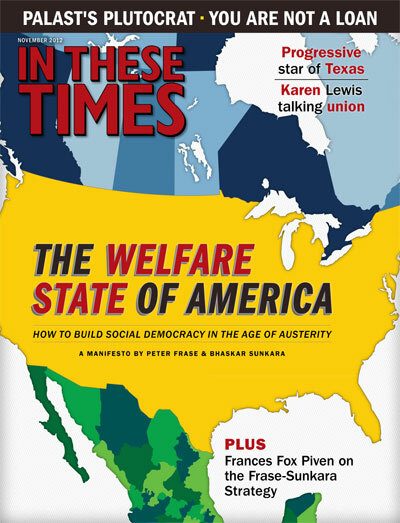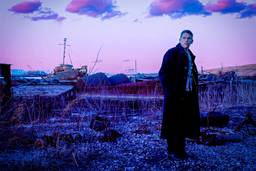A Heathcliff We Haven’t Seen Before
Crafty casting turns Wuthering Heights into a love story haunted by the guilt and ghosts of slavery.
Michael Atkinson

The new film adaptation of Emily Brontë’s Wuthering Heights, directed by Brit newcomer Andrea Arnold, is a redoubtable piece of work, but its fierce Yorkshire mood and evocative on-location shooting are not its primary selling points. Even Brontë’s ür-Victorian story, massaging the hearts of tragic romantics for 150 years, is sublimated by a stroke-of-genius casting concept: the reimagining of Heathcliff, that “dark-skinned” “gipsy” grown into a heartbroken vengeance machine, as a black man. Yorkshire non-pros Solomon Glave (young Heathcliff) and James Howson (adult) star as the anti-hero, stalking improbably around the late-1700s moors and moldering estate houses like a Third World nightmare invading the First.
Brontë’s Heathcliff was repeatedly evoked as “dark,” and culled from the slums of Liverpool (a port fraught with immigrants). But in movies and theater, he has always manifested as white, from Laurence Olivier to Tom Hardy. Brontë may not have intended Heathcliff to have been a full-on African — which in the 1700s meant being a slave — but Arnold’s coup turns the old story around, from a wicked love-lost tragedy into a crisis of a society suffering the guilt and ghosts of slavery. The gist of the dynamic is electrified with one subtle image — a glimpse of the young Heathcliffe without his shirt, his back scored with whip marks.
In the 1770s, when the story is set, a black child was rare even in Liverpool. The African chattel of the busy Brit-run slave trade were taken almost exclusively to British, Spanish, French and Portugese colonies in the Americas. Which would make a black Heathcliff in Yorkshire an absolute stranger in a strange land, about whom specific bigoted norms would not even have been fully formed. Even so, his very presence in the landscape of Brontë’s imagination represents a primal taboo for British society, a rogue spirit haunting the Empire. On top of that, speaking of taboos, this is an interracial love story, in a time and place where most Brits were tortured by mere class divisions, and appalling economic inequity. The extremity of race and the xenophobia it inspires weren’t even yet a major social issue.
It’s a crafty way to repurpose a classic, and today Arnold’s film feels like a natural, a reconceptualizing flourish permissible and even predictable in the new century. We live, after all, not only in the age of Obama but in the age of Denzel, and it’s easy to take for granted the position we’re in in terms of race in popular movies. Which is to say, we might not even notice that we’re in any position at all. For the movies Hollywood now makes, race is an irrelevancy, moviegoers don’t see any difference between an action blockbuster that stars Jamie Foxx or Colin Farrell. Any recent blockbuster you can think of could’ve swapped out its lead for an actor of the opposite race without causing a ripple in the slipstream. After almost a century and a quarter of movie culture and rampaging real-life bigotry, that’s an achievement.
Of course, the streamlining of Hollywood product down to formulas that require no emotional engagement has something to do with it. Therein lies the rub. The courting of African-American and other minority audiences, an absolute necessity in the last decades, has meant that certain types of big movies would be made and others wouldn’t. Action movies with black stars? Sure. But Hollywood used to make movies for a wide variety of audience tastes — most of them adult — including romances, family sagas and “women’s film” dramas.
There are far fewer of these types of movies being made today, and one of the reasons must be that these genres are not so easily desegregated. Clearly we are not as comfortable in our post-racial skin as we think. Trading George Clooney for Denzel in a romantic frolic with Julia Roberts is still an idea that would curdle Middle America’s blood, particularly if there’s a contemporary degree of sexual frankness involved. The characters might not care or notice, but a large portion of the potential audience would find every reason to stay home and watch Friends reruns instead. Black men with guns are easy to handle, but reconsidering that loaded phallus as an honest-to-God penis is another matter altogether.
So what else is new? There are other, non-sexual paradigms in which racial purity still figures — predominantly, and with no small payload of irony, the “issue drama” about racism. Hollywood law has it that any film preaching the evils of racism, including The Help and Spielberg’s upcoming Lincoln and proceeding backward to the 1950s, when American filmmakers started to care about it at all, center around a helpful white protagonist. Who, after all, would want to see a film about Steve Biko or the “Mississippi burning” lynchings without a righteous white hero its center?
In Arnold’s film, the use of a black lead matters because race still matters. The problem is, movies as a medium will not step backward toward the catholic smorgasbord of the 20th century, but will only press onward, toward a purer and louder Transformers-ness. Black faces will proliferate, but the social and cultural roles they’ll play will continue to be proscribed. Perhaps TV, with its fresh mandate for adventuresome programming geared toward adults, will breach the ramparts. There may well be a dramatic pilot on someone’s desk that centers on an interracial marriage — but the show’s subject will be, helplessly, interraciality. It’s difficult to imagine a day when this will not be so.









